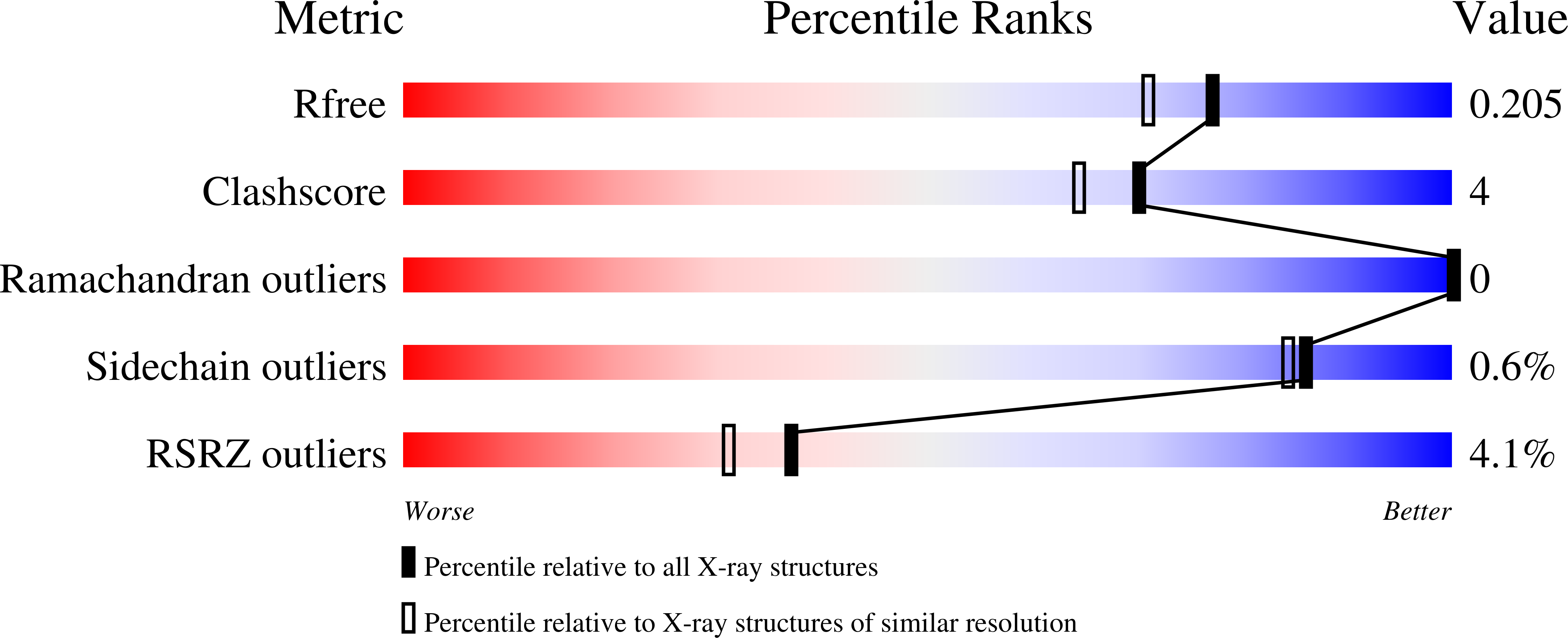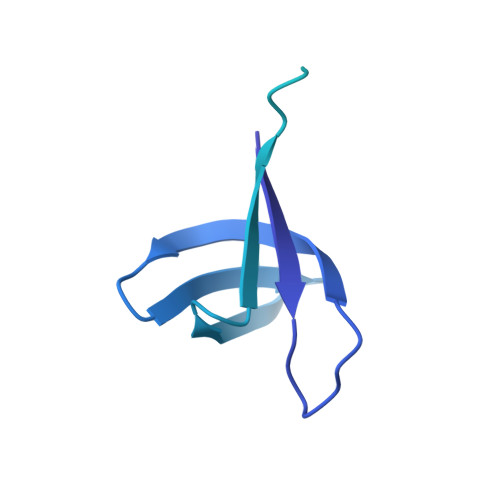The Drug-Induced Interface That Drives HIV-1 Integrase Hypermultimerization and Loss of Function.
Singer, M.R., Dinh, T., Levintov, L., Annamalai, A.S., Rey, J.S., Briganti, L., Cook, N.J., Pye, V.E., Taylor, I.A., Kim, K., Engelman, A.N., Kim, B., Perilla, J.R., Kvaratskhelia, M., Cherepanov, P.(2023) mBio 14: e0356022-e0356022
- PubMed: 36744954
- DOI: https://doi.org/10.1128/mbio.03560-22
- Primary Citation of Related Structures:
8A1P, 8A1Q - PubMed Abstract:
Allosteric HIV-1 integrase (IN) inhibitors (ALLINIs) are an emerging class of small molecules that disrupt viral maturation by inducing the aberrant multimerization of IN. Here, we present cocrystal structures of HIV-1 IN with two potent ALLINIs, namely, BI-D and the drug candidate Pirmitegravir. The structures reveal atomistic details of the ALLINI-induced interface between the HIV-1 IN catalytic core and carboxyl-terminal domains (CCD and CTD). Projecting from their principal binding pocket on the IN CCD dimer, the compounds act as molecular glue by engaging a triad of invariant HIV-1 IN CTD residues, namely, Tyr226, Trp235, and Lys266, to nucleate the CTD-CCD interaction. The drug-induced interface involves the CTD SH3-like fold and extends to the beginning of the IN carboxyl-terminal tail region. We show that mutations of HIV-1 IN CTD residues that participate in the interface with the CCD greatly reduce the IN-aggregation properties of Pirmitegravir. Our results explain the mechanism of the ALLINI-induced condensation of HIV-1 IN and provide a reliable template for the rational development of this series of antiretrovirals through the optimization of their key contacts with the viral target. IMPORTANCE Despite the remarkable success of combination antiretroviral therapy, HIV-1 remains among the major causes of human suffering and loss of life in poor and developing nations. To prevail in this drawn-out battle with the pandemic, it is essential to continue developing advanced antiviral agents to fight drug resistant HIV-1 variants. Allosteric integrase inhibitors (ALLINIs) are an emerging class of HIV-1 antagonists that are orthogonal to the current antiretroviral drugs. These small molecules act as highly specific molecular glue, which triggers the aggregation of HIV-1 integrase. In this work, we present high-resolution crystal structures that reveal the crucial interactions made by two potent ALLINIs, namely, BI-D and Pirmitegravir, with HIV-1 integrase. Our results explain the mechanism of drug action and will inform the development of this promising class of small molecules for future use in antiretroviral regimens.
Organizational Affiliation:
Chromatin Structure & Mobile DNA Laboratory, The Francis Crick Institute, London, United Kingdom.



















